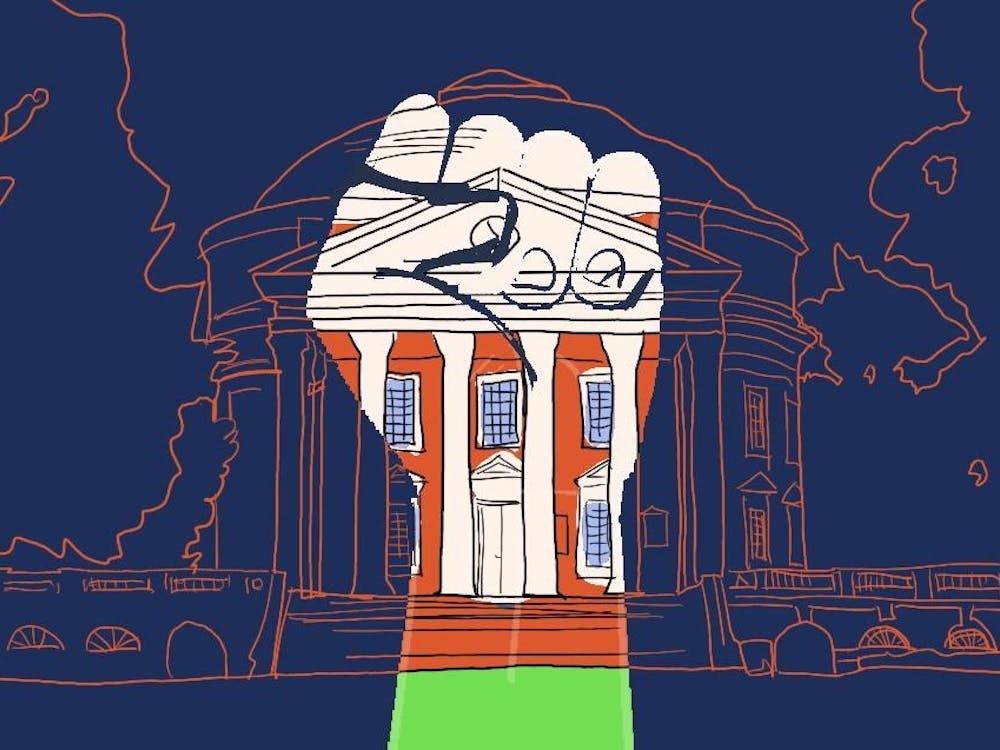The nation's top public and private universities are once again under public scrutiny for being home to rampant alleged sexual misdeeds, thanks to survey results released Monday by the Association of American Universities. The study, which considered students at 27 universities, including U.Va., found that over 20 percent of female undergraduates at those schools said they had been victims of sexual assault.
Naturally, after a tumultuous year following Rolling Stone’s publication of a fabricated account of horrific rape on Grounds, U.Va. bears news about its rape problems still more gingerly than most schools.
Rolling Stone reporter Sabrina Rubin Erdely illustrated perfectly the danger of the “rape culture” narrative. Distraught about the prevalence of sexual assault on campuses and surrounded by cries of alarm, people are primed to look for stories that confirm their worst fears. The technical term for this phenomenon is confirmation bias. A Columbia Journalism School report investigating the failures of Erdely’s piece explained: people tend to be “trapped by pre-existing assumptions and to select facts that support their own views while overlooking contradictory ones.” It’s a sad state of affairs when confirmation bias leads to overdiagnosis of campus rape crises, but that’s the danger threatening honest discussion of college sexual climates.
Last spring, The Cavalier Daily’s managing board admirably took a stand against the lazy reporting and reading confirmation bias spurs. It’s not just Erdely’s piece that went terribly wrong. As The Cavalier Daily’s managing board put it, “the desire to portray rape at its most gruesome, and U.Va. at its most privileged” doomed the Rolling Stone story, but those same desires affect coverage of the University and rape on college campuses all the time.
This week, The Cavalier Daily should have fulfilled its own demand for honest and robust interrogation of the rape culture stories and figures we expect to hear. Readers and journalists across the nation have expressed shock at the numbers the AAU report released, but those numbers still fit neatly into the narrative campus activists and the Department of Education’s Office for Civil Rights have been hammering for years.
So it is the job of campus newspapers, and especially The Cavalier Daily, to examine the report to make sure it is representing the truth before sounding cries of alarm.
The Cavalier Daily’s biggest blunder this week was in running a headline that did anything but examine soundly the AAU report’s findings: “Nearly one in four women sexually assaulted at U.Va.” Editors soon changed the headline to the more cumbersome — but more honest — “Campus climate survey shows nearly one in four women experiences sexual assault, misconduct at U.Va.”
But beyond headlines, The Cavalier Daily’s job was to lead its readers in scrutinizing the new data. Most college newspapers were not up to the task. A story or three investigating the questions the survey asked might have provided readers more context. Cavalier Daily editors discussed the survey’s low response rate — 19 percent overall and 26 percent at the University — internally. The AAU study includes a whole chapter about the dangers of dealing with such low response rates. The problem is called nonresponse bias — people who respond to the survey may be more likely to provide certain answers than those who don't participate. "For example, the response rate of females is higher than that of males," the report says, "and there is also a strong correlation between gender and victimization."
Despite the fact that these warnings from the AAU fall in a report specifically about U.Va.'s data, The Cavalier Daily editors concluded the results were sound enough to publish without qualification. “U.Va. had a higher response rate than most of [the other schools], and also the institution doing the survey is very credible,” Managing Editor Chloe Heskett said in an interview. “That was an editorial call to put faith in those statistics.”
Transparency is a safe choice in tough decisions: if nothing else, that internal discussion about the data’s statistical significance and credibility could have played out on The Cavalier Daily’s pages so readers could follow along more informed about the information they were digesting.
The Cavalier Daily could also have dealt with the survey’s questions’ phrasing and its somewhat fuzzy and broad definitions of relevant terms, both of which could have significant effects on responses. Coverage focused on how U.Va. numbers differed from those of other schools, but there are more fundamental questions about the survey's findings that ought to be addressed both broadly and at U.Va. in particular.
Sexual assault on Grounds is indeed a problem, and The Cavalier Daily should be covering the hell out of it. But the AAU report has not been proven to be anything close to evidence of an epidemic. Instead of just offering tepid prognoses about improvements to come and references to hurdles overcome, The Cavalier Daily should be interrogating ruthlessly the facts on the ground — not leaving that task to undiscerning readers and researchers plagued by the ugliest sort of confirmation bias.
Julia Fisher is the Public Editor for The Cavalier Daily. She can be reached at publiceditor@cavalierdaily.com or on Twitter at @CDPublicEditor.






